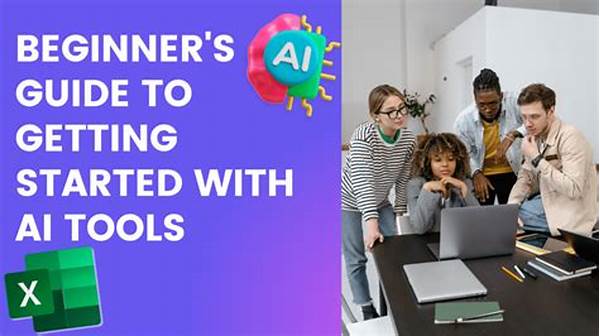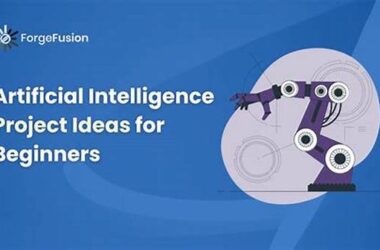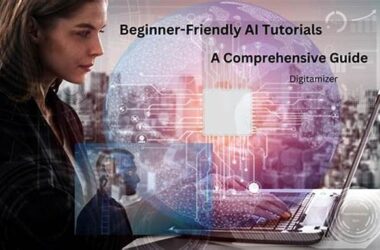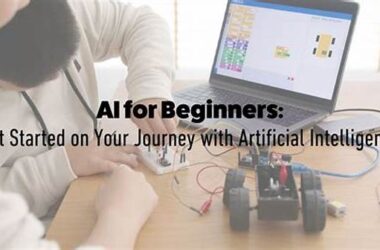How to Get Started with AI Tools in 2025
In the futuristic landscape of 2025, artificial intelligence (AI) is no longer just a buzzword but a part of everyday life, revolutionizing industries and personal lifestyles alike. Imagine AI-driven cars navigating the roads with precision, virtual assistants capable of delivering highly personalized experiences, and business processes optimized to perfection with AI insights. It’s a brave new world, brimming with opportunities for those daring enough to explore the wonders of modern technology. However, standing at the edge of this vast technological frontier, one might ask, “Where do I begin?” Thankfully, navigating this intimidating landscape is less daunting than perceived. Getting started with AI tools in 2025 might sound complicated, but with the right guidance, it can become an immensely rewarding journey.
Read More : Ai Learning Roadmap Beginner To Expert
Whether you’re a seasoned professional looking to streamline workflows, an entrepreneur aiming to edge out competition, or an AI enthusiast eager to explore the domain, recognizing the potential of AI tools is the first step towards harnessing their power. In this article, we will break down the process into digestible steps, removing the intimidation factor and allowing you to approach AI applications with confidence. Welcome to a world where possibilities are limitless, and innovations are boundless, so let’s delve into how to get started with AI tools in 2025.
AI Tools: A Deep Dive into 2025
The first step in embracing AI tools involves understanding their capability. Unlike in the past, AI tools in 2025 are not confined to rigid programming; they are adaptive, learning from data inputs and environmental changes. Consider this an investment in innovation. Picture a marketer using AI analytics to predict consumer behavior precisely or a healthcare professional employing AI diagnostics to ensure accuracy and efficiency. The critical point here is alignment: aligning your particular needs with what AI tools can offer, transforming challenges into solutions.
As we continue this journey, it’s essential to learn from the innovators paving the way. We’re witnessing a digital revolution—experts across various sectors are reshaping industry standards by integrating AI tools, setting benchmarks, and inspiring the next wave of change-makers. Identifying parallels between their successes and your goals helps turn aspiration into tangible accomplishments. Embrace this era’s potentials and, more importantly, comprehend how to get started with AI tools in 2025 effectively, as it is the key that will unlock significant advancements.
Engaging with AI Tools
The narrative of AI tools is far from static; it’s as dynamic as the technology itself. Engaging with these tools requires an exploration of their evolving nature. Join forums and communities where machine learning and AI development are discussed passionately. These platforms are treasure troves of shared knowledge, providing insights and fostering collaborative growth. Understand the nuances of AI through courses, tutorials, and expert talks. Building a solid foundation in AI literacy ensures that when you’re ready to dive deep, you have the scaffolding to support complex ventures.
Concluding your initial journey with AI starts with practical applications. Test AI tools in sandbox environments, providing a safe space to experiment without adverse consequences. Think of it as playing in a digital playground, where trying new things is encouraged. As you gain proficiency, integrate AI solutions into more stringent workflows, optimizing every level of operation. Remember, the goal isn’t just adaptation but adoption—adopting AI tools in a manner that propels your endeavors forward.
Tools & Resources for Beginners
As we round out this exploration, understanding the resources available is crucial. AI tools like TensorFlow, PyTorch, and Google AI offer invaluable gateways into this world. They provide tutorials and community support aimed at newcomers, making the learning curve less steep. The key is to start with realistic goals—small projects that can leverage these tools’ capabilities without overwhelming complexity.
Purpose and Potential: Navigating AI in 2025
AI in 2025 is akin to the Wild West of innovation. This vast landscape promises riches for those who dare to explore its depths. The primary purpose of engaging with AI tools is to harness their potential to revolutionize processes, making them more efficient and effective. For businesses, the promise of AI means streamlined operations and untapped opportunities for growth. For individuals, it represents a leap towards personalization and convenience never experienced before.
AI tools bridge the gap between potential and reality by offering intelligent solutions to complex problems. Imagine AI as your co-pilot, guiding you through turbulent business challenges, predicting market trends, or even suggesting creative ideas based on pattern recognition. How to get started with AI tools in 2025 involves understanding this potential and aligning it with your strategic goals, whether personal or professional. It’s a journey of discovery—a path filled with learning and adaptation at every turn.
Learning and Implementing AI Strategies
To effectively navigate this terrain, the role of education cannot be overstated. Learning AI isn’t just about programming; it’s about understanding concepts that drive these innovations. AI literacy has become crucial, highlighting the importance of upskilling or reskilling in this domain. Online platforms, university courses, and workshops have democratized learning, offering access to knowledge previously reserved for the elite few.
The application of AI tools then becomes the ultimate test of understanding. Create pilot projects to test theories and ideas, thus enabling a practical approach to AI adoption. Think of these projects as seedlings: plant them carefully, nurture with resources and strategy, and watch them grow into fruition. This is how you transition from concept to creation, implementing AI solutions that address specific needs while witnessing tangible outcomes.
Benefits and Best Practices
The allure of AI isn’t just its cutting-edge nature but the tangible benefits it offers. Efficiency, precision, and innovation are just a few merits driving AI adoption. That said, best practices ensure these benefits are not short-lived. Practice ethical AI usage, ensuring transparency and accountability in every operation. Be open to feedback and iterative improvements, understanding that AI is not static but evolves alongside both users and developers.
Furthermore, keep sustainability in focus. As you embrace AI tools, understand their environmental and societal impacts. Working towards solutions that contribute responsibly to the greater ecosystem is not just a trend but a necessity.
10 Practical Steps to Get Started with AI Tools in 2025
1. Educate Yourself: Understand AI basics through courses and workshops.
2. Identify Needs: Define the specific challenges you want AI to address.
3. Choose the Right Tools: Explore available AI platforms like TensorFlow and PyTorch.
4. Build a Learning Community: Engage with online forums and communities.
5. Experiment in Sandboxes: Test AI tools in non-critical environments.
6. Launch Pilot Projects: Implement small-scale projects to test AI feasibility.
7. Evaluate and Iterate: Assess results and refine AI applications.
8. Expand AI Integration: Gradually introduce AI into broader operations.
9. Stay Updated: Follow industry trends and technological advancements.
10. Practice Ethical AI: Ensure ethical use of AI respecting privacy and transparency.
The Roadmap to AI Mastery: Skills and Strategies
Embarking on the journey of how to get started with AI tools in 2025 requires a roadmap—a strategy that guides your exploration and mastery of this evolving domain. At its core, this blueprint encompasses essential skills and effective strategies designed to empower individuals and organizations alike. It’s a collaborative dance between understanding the technical aspects of AI and harnessing its potential to meet real-world demands.
Building competency in AI tools necessitates a blend of technical expertise and creative problem-solving. Begin by engaging with online courses and certifications that focus on AI algorithms, data management, and machine learning. A solid foundation in these areas ensures you’re well-equipped to tackle complex challenges, offering a competitive edge that bolsters your career or endeavors.
AI Strategy for Long-Term Success
Crafting a sustainable AI strategy involves more than adopting new technologies; it’s about fostering a culture of innovation and adaptability. Encourage a mindset that embraces change, where learning becomes a continuous journey, not a destination. This is particularly crucial for businesses navigating competitive landscapes, as agility and resilience are hallmarks of successful AI integration.
Moreover, don’t shy away from leveraging external expertise. Collaborate with AI consultants or strategic partners who can provide insights and best practices. This partnership approach enriches your strategy, offering perspective and expertise that might otherwise be missed. Remember, the path to AI mastery is not traveled alone—it’s a shared journey fueled by collaboration and innovation.
Building Your AI Toolkit
Developing a personalized AI toolkit involves selecting platforms and software tailored to your needs. Explore resources such as Google AI, IBM Watson, or emerging open-source projects that best align with your objectives. It’s about finding the right balance between accessibility and functionality, where every tool serves a specific purpose. This toolkit becomes the foundation upon which you build your AI initiatives—adaptive, ready, and responsive to evolving requirements.



